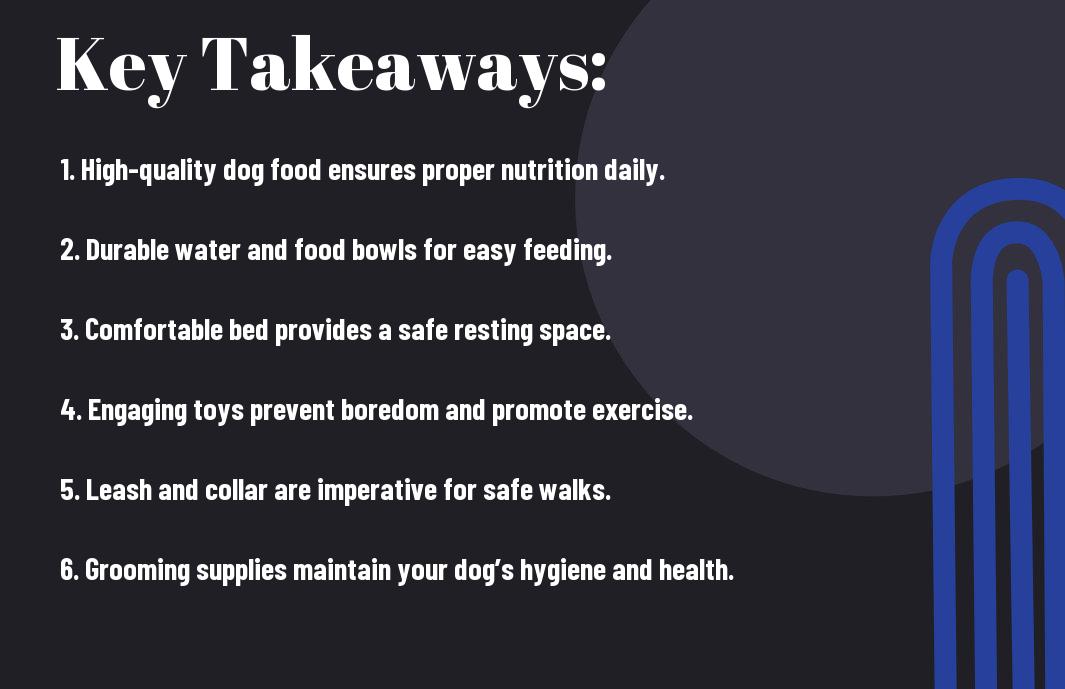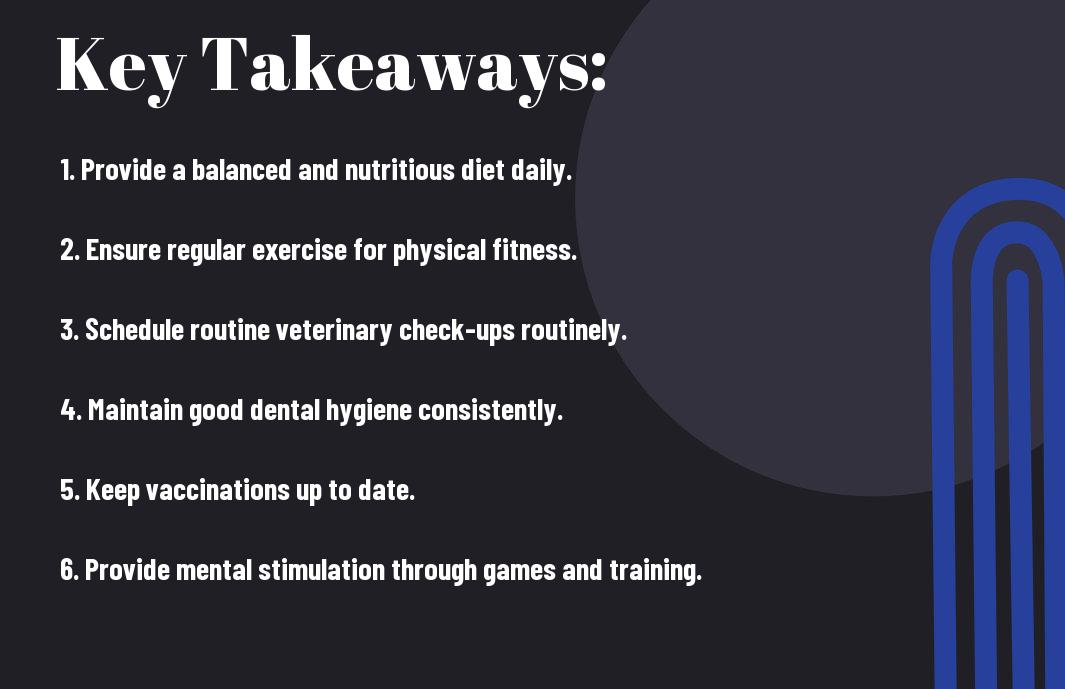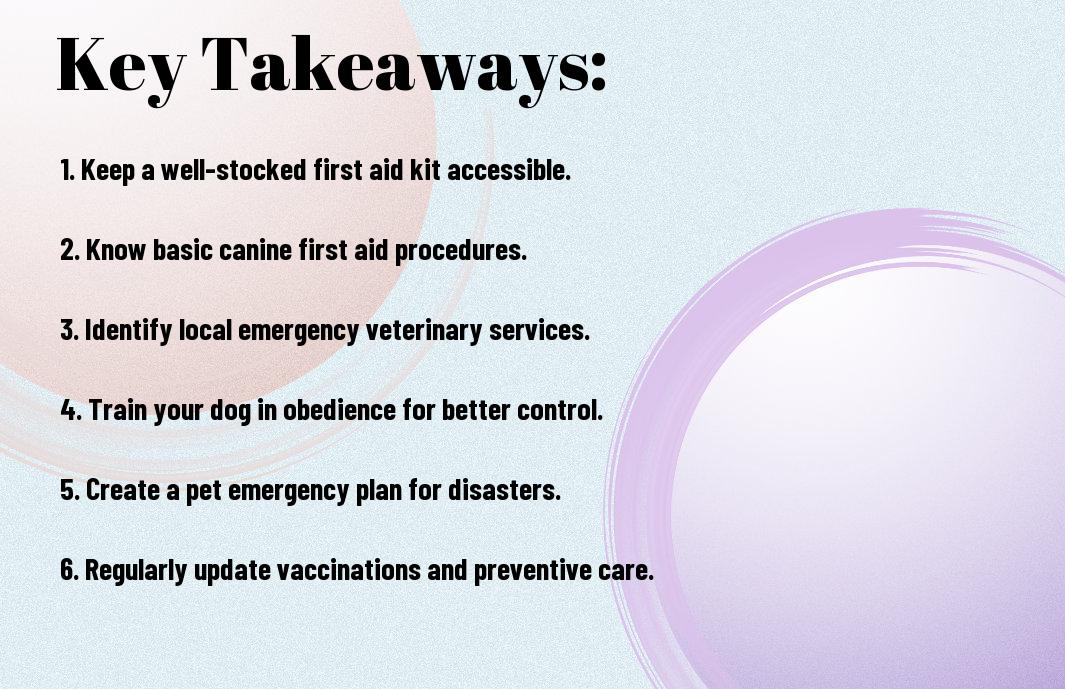Just having the right supplies on hand can make all the difference when it comes to your horse’s health. It’s vital to equip your barn with a well-stocked horse first aid kit that addresses common injuries and emergencies. In this guide, you’ll discover 15 must-have items that will prepare you for unexpected situations and ensure your horse receives timely care. By assembling this kit, you’re taking a proactive step to safeguard your horse’s wellbeing and enhancing your confidence in handling potential crises.
The Essentials of Equine First Aid: A Lifesaving Toolkit
Your equine first aid toolkit should be stocked with a comprehensive selection of vital items tailored to the unique needs of horses. Each item plays a vital role in addressing injuries quickly and effectively, which can dramatically influence the outcome of emergencies. Familiarizing yourself with these vitals can empower you to act decisively when every second counts.
The Importance of Preparedness in the Barn
Being prepared in the barn is about more than just having supplies on hand; it’s a commitment to the well-being of your horses. Quick access to the right tools means you can manage injuries or health issues before they escalate. Creating a culture of preparedness not only protects your animals but also builds a safer environment for everyone involved.
Key Considerations When Assembling Your Kit
Assembling your horse first aid kit requires thoughtful consideration of your specific circumstances and the types of challenges you may face. Assessing the common injuries in your area, the size of your barn, and the number of horses you manage will guide your selections. Additionally, consider any special needs or medical histories particular to your horses to ensure that your kit addresses those scenarios effectively.
Focus on the widest range of potential incidents by including both everyday items like bandages and antiseptics, as well as specialized equipment such as a digital thermometer and a colic risk assessment guide. Tailor your kit by observing the most common injuries that occur in your barn, whether it’s cuts, scrapes, or more serious health events. Keeping your kit regularly stock and rotating expired items ensures that you’ll be equipped when an unexpected situation arises.
Must-Have Components of a Horse First Aid Kit
Your horse first aid kit must include specific items that address common injuries and emergencies. Having a well-stocked kit ensures you’re ready for anything, from minor scrapes to more serious health issues. It’s crucial to check and refresh the contents regularly, ensuring that medications are in date and supplies are readily available when needed.
Wound Care Supplies: Bandages, Antiseptics, and More
Wound care is a foundational component of any horse first aid kit. Include various sizes of bandages, like cohesive and adhesive types, to cover different injuries. Antiseptics such as iodine solutions or antibacterial sprays are vital for cleaning wounds before dressing them, preventing infections. Gauze pads, vet wrap, and self-adherent bandages complete the crucials, allowing you to manage both minor and severe wounds effectively.
Essential Medications: What You Should Always Have on Hand
Equipping your first aid kit with crucial medications prepares you for common health situations. Items like antihistamines, pain relief medications, and anti-inflammatories should be standard. Additionally, a broad-spectrum antibiotic ointment can be beneficial for treating infections, while a thermometer will help you assess your horse’s temperature as needed.
Knowing which medications to include is vital to your kit’s effectiveness. Always have phenylbutazone and flunixin meglumine for pain relief, as well as diphenhydramine for allergic reactions. Supplements like electrolytes can help if dehydration occurs, particularly after intense exercise. Ensure each medication has clear dosage instructions and expiry dates for safe administration.
Tools for Effective Examination: Thermometers and Scissors
Tools like thermometers and scissors are invaluable in a first aid kit. A digital or infrared thermometer allows you to quickly check your horse’s temperature, which is crucial in assessing their health during an emergency. Scissors are necessary for cutting bandages or other materials, ensuring you can access and treat injuries quickly without unnecessary delays.
Effective examinations depend on having the right tools readily available. A digital thermometer offers precise readings in minimal time, helping you respond appropriately to fever. Sharp scissors facilitate swift cutting through various bandage materials without causing damage to the horse’s skin, allowing for efficient and safe treatment. Keeping these tools in good working order is important for successful emergency management.

Specialized Items for Unique Situations
Equipping your horse first aid kit with specialized items tailored for unique situations can make a significant difference during emergencies. Depending on your horse’s environment and potential risks, consider including items like antiseptic sprays for treating wounds, a hoof pick for foreign object removal, and a supportive wrap for sprains. Each specialized tool plays a vital role in addressing specific injuries promptly and efficiently.
Recognizing and Responding to Common Injuries
Being able to identify and respond to common injuries allows you to act quickly before complications arise. Start with a basic understanding of signs like lameness, swelling, or unusual behavior, which may indicate injuries such as sprains, cuts, or colic. Immediate assessment and appropriate first aid can often prevent further damage and facilitate quicker recovery.
Seasonal Protectants: Cooling Gels and Sunscreens
Providing your horse with seasonal protectants like cooling gels and sunscreens is crucial for their comfort and skin health. Effects of harsh sun exposure or heat can result in skin burns or discomfort, particularly in lighter-colored horses. Maintaining their well-being during peak summer months not only enhances their outdoor experience but also helps in preventing long-term skin issues.
Cooling gels offer relief from heat stress, soothing inflamed skin and promoting recovery from overexertion or minor injuries. Look for gels containing ingredients like aloe vera and menthol for added cooling effects. Sunscreens specifically formulated for equine use can prevent sunburns and protect sensitive areas, such as the nose and ears. Choosing options that are both water-resistant and easy to apply ensures your horse maintains protection even during sweaty rides or bathing. Regular application during sunny months can be a simple yet effective way to keep your horse comfortable and healthy.

The Organizational Genius: Storing Your First Aid Kit
Effective storage of your horse’s first aid kit can streamline your response during emergencies. Choose a waterproof, sturdy container that is easy to carry and store. Clearly label each compartment or section, ensuring items are well-organized and easy to locate. Utilizing a tiered or modular design can further maximize space, helping you maintain a neat and efficient setup.
Creating a User-Friendly Arrangement
Position frequently used items at the top or front of your first aid kit to promote quick access. Group similar supplies together—bandages with antiseptics, for example—to eliminate confusion during urgent situations. Employ clear plastic bags or small bins to categorize products while allowing visibility for easy identification.
Regular Maintenance: Ensuring Your Kit is Always Ready
Frequent checks of your first aid kit prevent surprises in emergencies. Schedule monthly inventory assessments, ensuring that all items are stocked and within their expiration dates. Replace any used or expired supplies immediately to keep the kit fully prepared for unexpected situations.
During your monthly inventory, carefully examine all supplies. Items like gauze should not only be counted but also checked for damage or contamination. By maintaining a checklist, you can systematically go through each section of your kit. Additionally, consider setting reminders for seasonal updates to evaluate specific needs as your horse’s activities change throughout the year. Staying proactive guarantees that your first aid kit is always equipped to handle any situation effectively.
Training for Emergencies: Beyond the Kit
Understanding how to use your horse first aid kit is just the beginning. Regular training can empower you to respond effectively during emergencies, ensuring that you can take immediate action when needed. Participating in hands-on workshops or simulations can enhance your competency, allowing you to practice skills such as bandaging, wound assessment, and managing equine shock in a controlled environment. Familiarity with both your kit and practical applications can make a significant difference in your horse’s outcome during a crisis.
Basic First Aid Knowledge for Horse Owners
Equipping yourself with basic first aid knowledge is crucial for every horse owner. Understanding how to assess your horse’s vitals, recognizing the signs of common injuries, and learning appropriate responses can aid in preventing complications. For example, knowing the normal heart rate ranges (28-44 beats per minute) allows you to identify distress early. Additionally, grasping how to clean and bandage wounds effectively can diminish the risk of infection, enabling better outcomes for your equine partner.
Resources for Advancing Your Equine Emergency Skills
Expanding your equine emergency skills can involve several valuable resources. Consider enrolling in local or online courses focused on equine first aid and emergency response. Many veterinary schools and organizations offer workshops to enhance your knowledge. Books, instructional videos, and veterinary blogs are also beneficial for ongoing education and can provide different perspectives on managing emergencies.
Diving deeper into equine emergency skills can significantly boost your confidence and effectiveness. Look for comprehensive online courses, such as those offered by the Equine Emergency Preparedness Institute, which often provide certificates upon completion. Veterinary webinars frequently cover topics ranging from injury management to emergency critical care, allowing you to learn from experts in real-time. Additionally, networking with local equine communities can connect you with informal mentorship opportunities and practical experiences that enhance your readiness for any situation.
Final Words
On the whole, creating the perfect horse first aid kit equips you to handle emergencies effectively and ensures your horse receives the best care possible. By including these 15 must-have items, you not only foster a safe environment at your barn but also enhance your preparedness for unexpected situations. Regularly check and replenish your kit, ensuring that your supplies are always in top condition. With a well-stocked first aid kit, you take proactive steps to support your horse’s health and well-being, making responsible horse ownership a top priority.
FAQ
Q: What are the vital items to include in a horse first aid kit?
A: The 15 must-have items for a horse first aid kit include: 1) Adhesive bandages, 2) Sterile gauze pads, 3) Elastic bandages, 4) Antiseptic wipes or solution, 5) Veterinary scissors, 6) Digital thermometer, 7) Hoof pick, 8) Cold pack, 9) Equine antiseptic ointment, 10) Tweezers, 11) Cotton swabs, 12) Disposable gloves, 13) Neosporin or antibiotic ointment, 14) Animal first aid manual, and 15) Duct tape. These items will assist in a variety of emergency situations.
Q: How should I store my horse first aid kit?
A: Store your horse first aid kit in a cool, dry place, and ensure it is easily accessible in case of emergencies. Use a durable, waterproof container to protect the supplies from moisture and dirt. Regularly check the kit to replace any expired items and keep it organized for quick use.
Q: How often should I check and update my horse first aid kit?
A: Check and update your horse first aid kit at least every six months. This ensures that all supplies are in good condition and that you have everything you need. Pay special attention to expiration dates on medications and ointments, and replace any items that are used or damaged.











